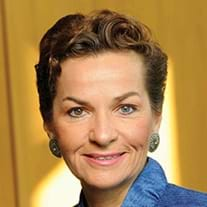Tales In New Urban Sustainability
From global data-sharing efforts to local educational campaigns, new urban sustainability projects are shaping the cities of a greener future.
In 1900, about 13 percent of the world’s population lived in cities. Today, well over half of it does, and that proportion continues to grow. Cities now account for three-fourths of global gross domestic product, and about the same fraction of human-generated carbon emissions.
Because they concentrate huge amounts of human activity into small areas, cities are ideal test beds for new sustainability efforts. Inspired by the United Nations’ Sustainable Development Goals (SDGs) new collaborations have sprung up between political leaders, scientists, communities and non-governmental organizations. From global data-sharing efforts to local educational campaigns, these new urban sustainability projects are shaping the cities of the future.

The Political Climate
Nations formally sign international agreements such as the SDGs, but in the case of urban sustainability, it falls to the leaders of individual cities to implement relevant policies. Fortunately, compared to national or regional governments, “cities are much more in tune with the direct impact of their policies, and they are much more in tune with the quality of life of citizens … from day to day,” says Christiana Figueres, Vice Chair of the Brussels-based Global Covenant of Mayors for Climate and Energy.
Figueres’ group provides a global network through which city leaders can share their ideas and results in pursuing sustainability.
“We’re a very important platform for city officials to learn what has worked,” says Figueres, pointing to examples such as Seoul’s renewable energy campaign, Paris’ expanding bicycle infrastructure, and a multi-city effort in India that has exchanged over 700 million incandescent lightbulbs for high-efficiency ones.
The central focus of the Global Covenant of Mayors is helping cities design and implement ambitious climate action plans, but that remit intersects with many of the U.N.’s other SDGs.
“How we pursue building our cities for the future — such as using high-carbon or low-carbon infrastructure, the way we change our consumption and production patterns, the way we deliver economic growth — are all relevant to the sustainable development goals and will largely determine the quality of life on this planet,” says Figueres.
United by Common Problems, Divided by Different Regulations
While cities around the world face common problems, they’re also bound by the particular laws and circumstances of their nations. Figueres emphasizes that the Global Covenant of Mayors has neither the authority nor the desire to try to synchronize urban policies across national boundaries. Instead, the group serves as a clearinghouse for cities to share data, strategies and ideas and discuss their experiences and results.
Science is a central part of all of these efforts, in measuring greenhouse gas emissions, studying and predicting the potential impacts of future climate change and also identifying the most effective measures cities can take to reduce their environmental impact and mitigate risks. Figueres points to a project in Myanmar, where scientists are developing models that can predict storm surges from cyclones, and others that identify areas at the highest risk of earthquakes and fires.
That information will help local leaders plan disaster responses to focus on the areas with the greatest needs, while also guiding future infrastructure development. Data from that project could inform similar efforts in coastal cities around the world, as rising seas and temperatures will likely make natural disasters more frequent.
Fundamentally a Problem of Physics and Atmospheric Chemistry
Climate change is fundamentally a problem of physics and atmospheric chemistry, but responding to it will require many other disciplines. Figueres emphasizes that in cities especially, researchers need to focus on social aspects of sustainability.
“We have a tendency to dehumanize cities, as though the purpose of cities were to have buildings and infrastructure, [but] the purpose of cities is actually to be the home for human beings,” says Figueres.
For policymakers to make the best use of science, scientists also need to explain it in human terms. “It does no good to come with science, accurate as it may be, if it’s not made relevant and understandable,” says Figueres.

Photo: Sun Kim, skstudiosnyc
Hungry For Change
While the Global Covenant of Mayors is helping scientists and city leaders work together globally, individual researchers are also taking local action in their own towns. New York’s Urban17 Initiative exemplifies this trend.
“I wanted the students who are part of our team to focus on urban sustainability in New York City, because it’s a great city to model hypotheses,” says Melanie Uhde, Urban17’s founder and managing director.
Urban17 currently consists of about a half-dozen volunteer analysts, mostly graduate students and young researchers from different disciplines and universities around the city. Despite its small size and lack of funding, the ambitious group is already tackling a project with global relevance, studying the overlapping problems of obesity and hunger.
“We know that, for example, the rates of obesity and hunger in the Bronx are the highest [in the city], so they’re basically bedfellows, which is a very common phenomenon in urban environments throughout the world,” says Uhde.
The Paradoxical Overlap of Hunger and Obesity
It may seem paradoxical for hunger and obesity to overlap, but interconnected problems can yield exactly that result.
“It’s definitely poverty, but it’s unfortunately much more complicated,” says Uhde, adding “even if you have money, do you have access to food, do you have the education, do you know what’s actually good for you, [and] do you have the time to put effort into a nutritious meal?”
In poor urban neighborhoods, the answers to those questions are often ‘no,’ causing synergistic deficits that can produce the entire spectrum of dietary problems. To address that, Uhde and her team are combining data on obesity and hunger with the locations of groceries, parks, fitness centers and schools.
The Impact of Obesity and Hunger on Education
Public schools provide good anchors for the project, not only in mapping the extent of obesity and hunger in some of the most vulnerable populations, but also in implementing solutions.
“Education is a very important factor to achieve sustainability, and we’re seeing [how] other factors like obesity or hunger influence education,” says Uhde. Malnourished students aren’t likely to learn well, which in turn can perpetuate poverty and poor health. Improving school meal programs and health classes could help break that cycle.
Uhde hopes other scientists will start tackling sustainability problems in their own towns. “Sustainability … affects everyone in every aspect of life,” she says, adding that “we’re living in this era where we have to do something no matter what.”
Jennifer Costley, PhD, Director, Physical Sciences, Sustainability and Engineering, New York Academy of Sciences contributed to this story.
